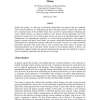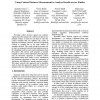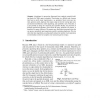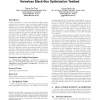1047 search results - page 188 / 210 » Learning the required number of agents for complex tasks |
MSS
2000
IEEE
14 years 2 days ago
2000
IEEE
Disk subsystems span the range of configuration complexity from single disk drives to large installations of disk arrays. They can be directly attached to individual computer syst...
VLDB
1997
ACM
13 years 11 months ago
1997
ACM
Spatial data mining, i.e., discovery of interesting characteristics and patterns that may implicitly exist in spatial databases, is a challenging task due to the huge amounts of s...
ESEM
2007
ACM
13 years 11 months ago
2007
ACM
Providing robust decision support for software engineering (SE) requires the collection of data across multiple contexts so that one can begin to elicit the context variables that...
EDBTW
2006
Springer
13 years 11 months ago
2006
Springer
Abstract. Algorithms for processing Structural Joins embody essential building blocks for XML query evaluation. Their design is a difficult task, because they have to satisfy many ...
GECCO
2010
Springer
13 years 11 months ago
2010
Springer
Genetic algorithms—a class of stochastic population-based optimization techniques—have been widely realized as the effective tools to solve complicated optimization problems ...




